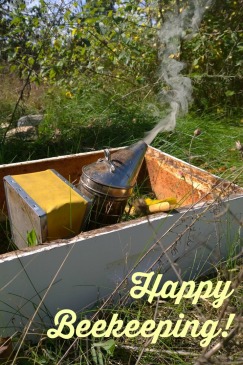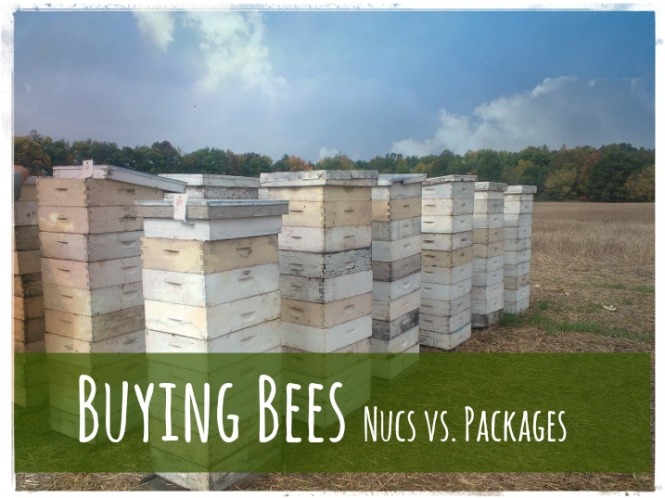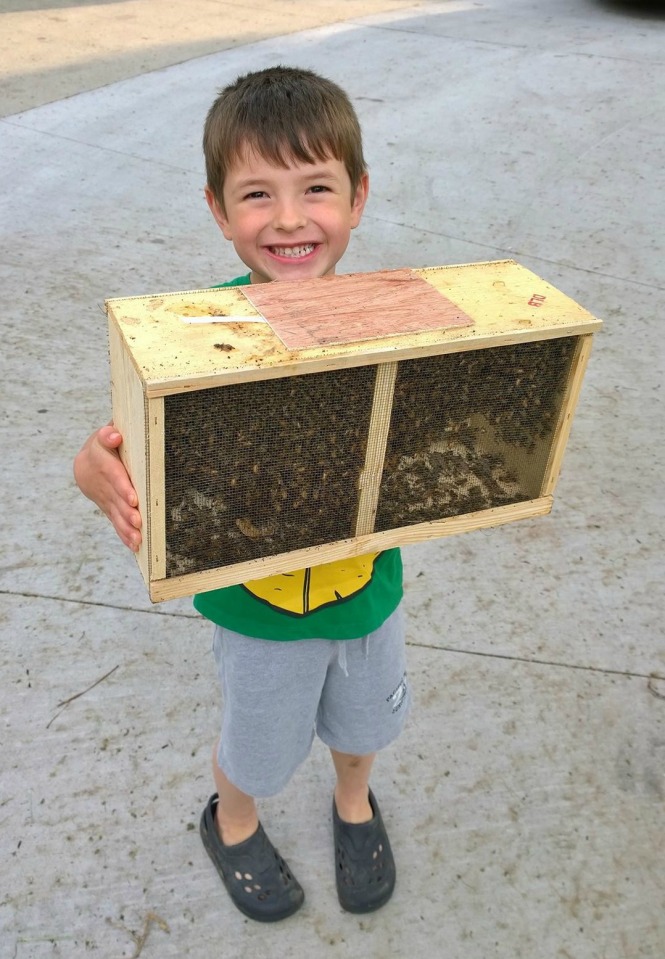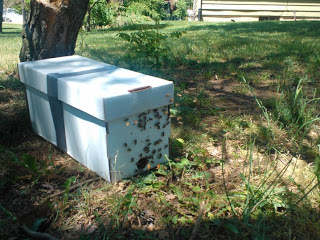We’ve taken two years off from this hobby of beekeeping. One year because we had just moved into our new house and were preoccupied with unpacking and getting our chickens back into a new coop, etc. Last year, February came and order forms and Facebook posts popped up about ordering nucs and packages and neither of us felt up to the challenge. Having had a year off, we felt out of the routine. Things were packed away, boxes were covered with snow. Neither my husband nor I felt interested in digging everything out and remembering where we had left off.
This year was different though. This year, the absence felt like an eternity. Both my husband and I felt anxious and excited about getting back into the routine. We dusted off bee suits and veils and cleaned up our smoker. I ordered a nuc from a friend who winters his bees in Pennsylvania and we were back in the game.
The nucs arrived on a typical spring day in Michigan: cold, windy, changing mix of rain, 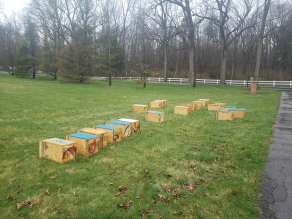 sleet, and even snow. We excitedly picked up our nuc box then came home and set it on the front porch for the time being.
sleet, and even snow. We excitedly picked up our nuc box then came home and set it on the front porch for the time being.
And then a week went by. We have lambs now and my husband has been furiously working to finish the fence in the pasture. We had intermittent days of rain, wind, and cold. And so the nuc sat, on the front porch.
But then, Easter weekend, we had the most glorious spring weather. Full sunshine, temps in the upper sixties, low seventies, and that nuc was buzzing with activity. We told the  kids the front corner of the house was off limits until we had a chance to install the nuc. We excitedly stood by and watched the bees circling and flying their figure-8s, acquainting themselves with their new home. All day Sunday, as my husband and I passed in the yard while doing other chores we’d say, “We gotta get those bees in tonight.”
kids the front corner of the house was off limits until we had a chance to install the nuc. We excitedly stood by and watched the bees circling and flying their figure-8s, acquainting themselves with their new home. All day Sunday, as my husband and I passed in the yard while doing other chores we’d say, “We gotta get those bees in tonight.”
Now, working with bees at dusk can be a little tricky. The key is to wait until the evening to move or install them because then everyone is home. (During the day, many bees are out working) However, too late and the bees are real cranky. Rather than fly around, they crawl around, and bees that crawl on you are bees that get tangled up in your clothing and, thus, sting you. Crawling bees are exceptionally good at working their way under cuffs or the waistband of jackets – if you aren’t properly protected. We learned this the hard way a few years ago when we picked up a hive 3 hours away. By the time we got there, it was dark and those bees were NOT happy. My husband received about 15 stings to prove it.
This year, my husband tackled the install on his own because I was on bedtime duty with the little ones. I hung around for the first 2-3 frames and then headed inside. About 10 minutes later, he barged in (looking a little wild-eyed) and said, “are there any bees still on me?!” I did a quick search of his shirt and pants, declared him clear and then said, “What the heck happened after I left?” It turns out that, due to propolis and comb shape, the frames didn’t fit tight into the box. As he chiseled and wiggled, it became increasingly darker and, well, the bees emerged! He said, it was like a switch, all of a sudden, they were crawling all over him. He had a smoker with him, but he was already in too deep at that point!
In the end, he earned 7 stings – from his neck, to his belly, to his ankle. And just like that, we were back in the beekeeping game. As the summer goes on and we feel more confident in our abilities and hives, we tend to wear fewer and fewer items of protection. Two years ago, my husband was down to only wearing a veil. He was surprised to find that that confidence and ease with which he once knew, did not come right back to him. He did wear his beekeeping jacket and veil this evening, but not his suit or gloves, hence the many points and entry and, ultimately, all the stings!
I’m a high school English teacher and this week my senior class is studying cognitive biases. We watched a video from the Smarter Every Day channel about riding a bike. In the video, Destin (the host) demonstrates how he was able to reprogram his brain in such a way that he was unable to ride a bike again. It takes him 8 months to do this. When he attempts to relearn, he is able to do this in a mere 20 minutes. It was interesting timing: just after teaching this lesson my husband said, later that night, “Guess beekeeping is not like riding a bike. I feel like a rookie again.” I can only assume we will be back to our confident ways in no time. After all, reverting back to a path your brain has already created is much easier than learning something new… In the meantime, I think I’ll pick up some extra Benadryl from the drugstore!






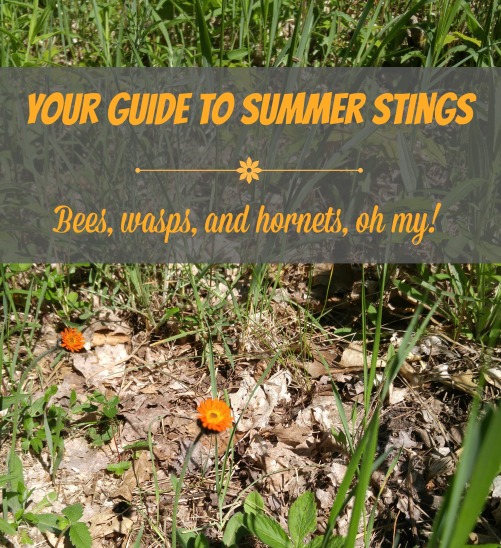
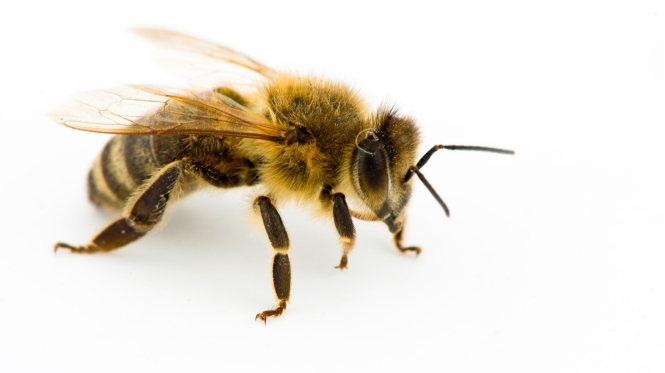
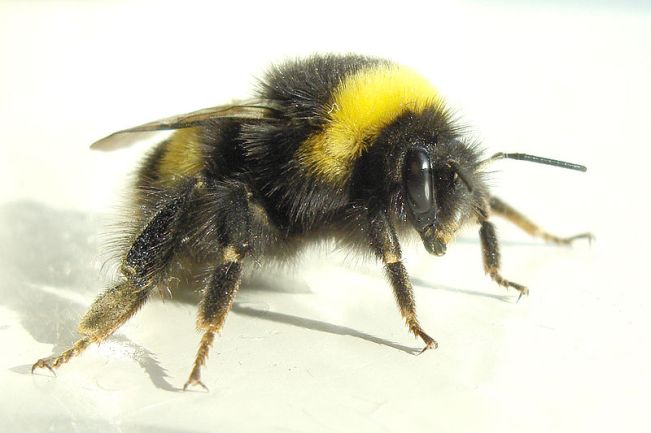

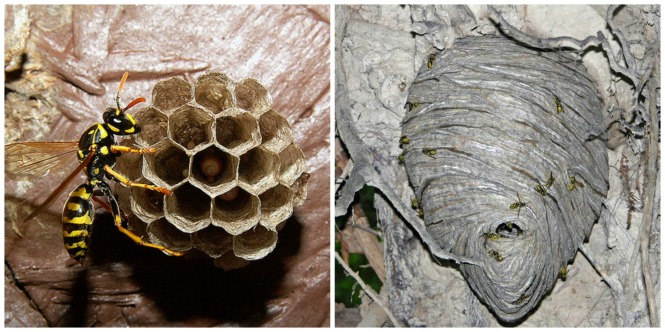

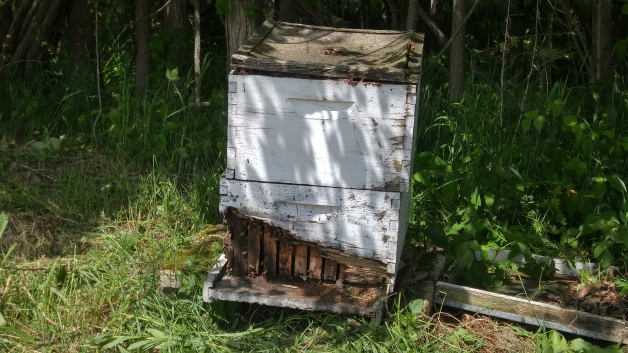
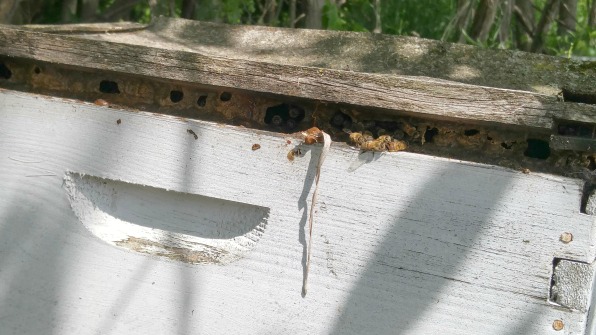
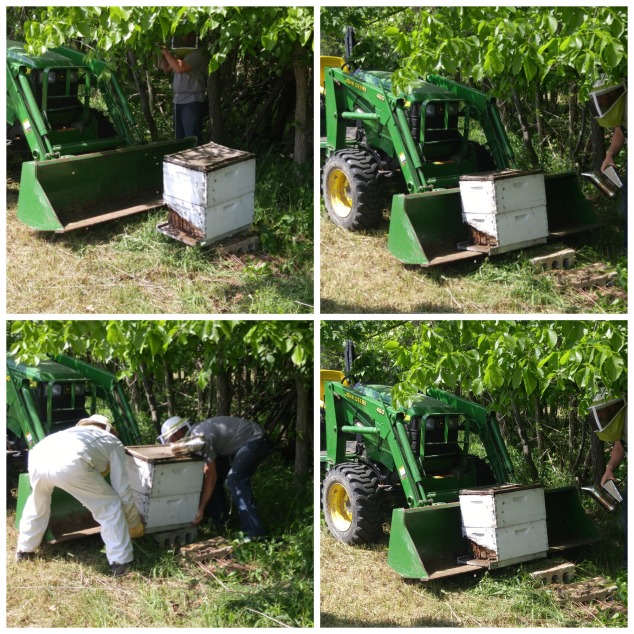
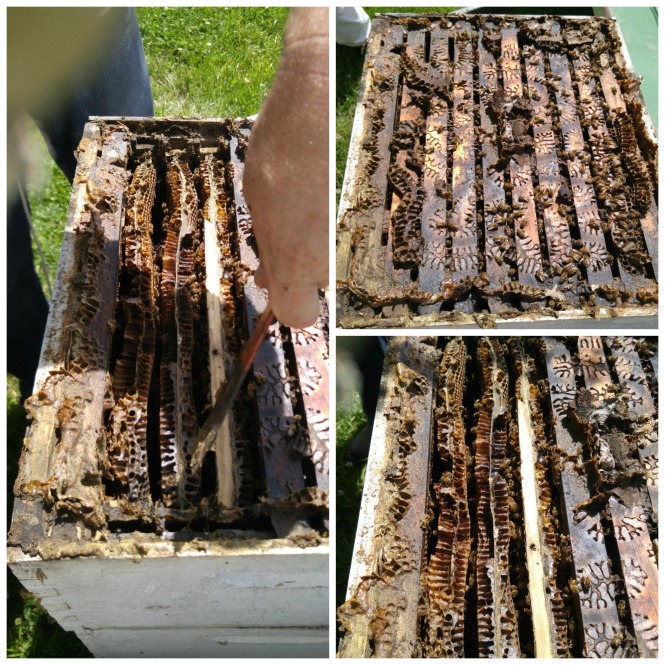
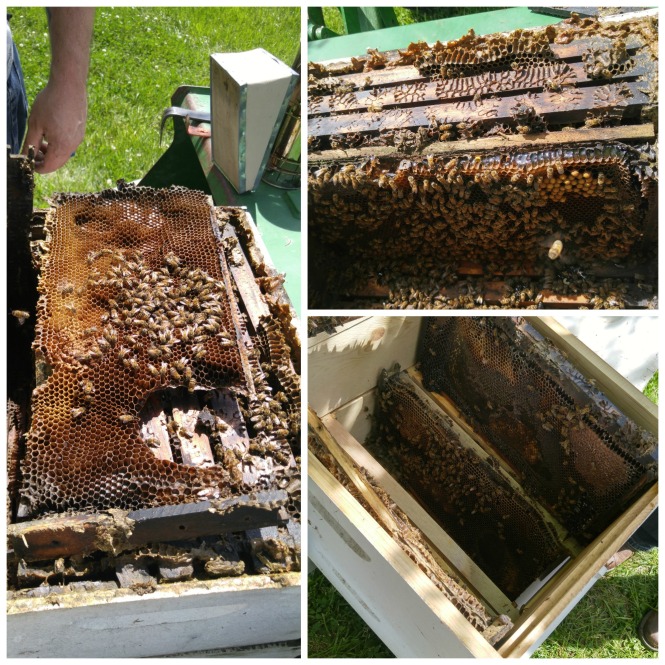
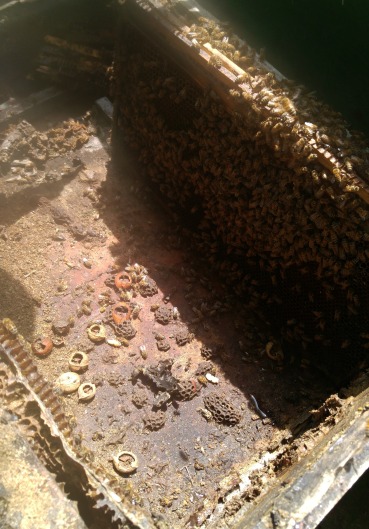
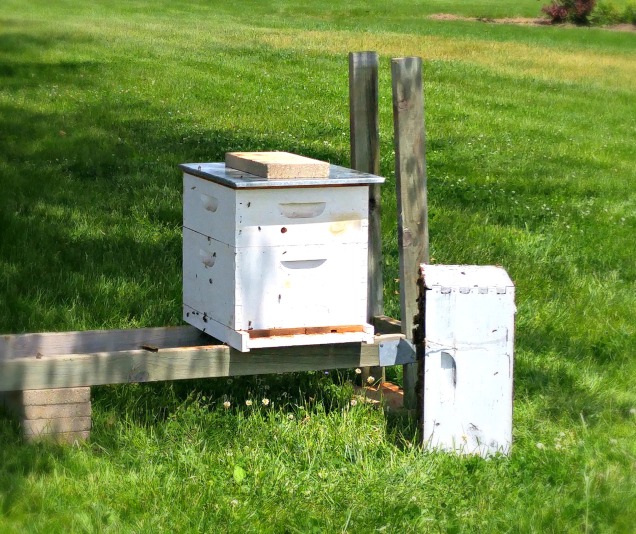
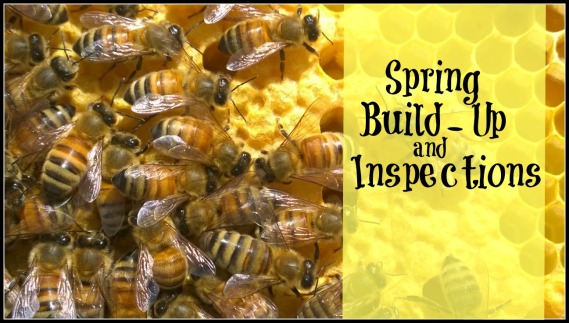
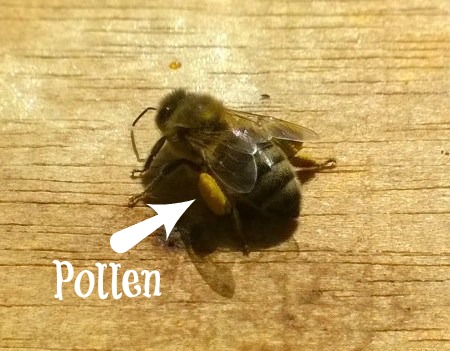
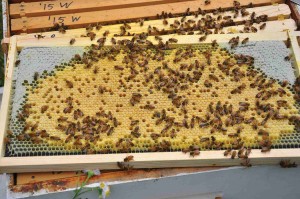
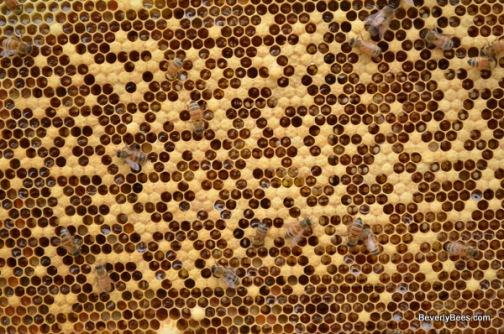
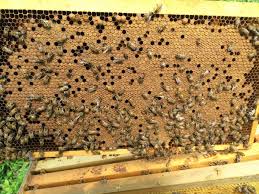
 nally, when analyzing a brood pattern, remember that the queen begins laying in the middle and then moves outward in a spiral
nally, when analyzing a brood pattern, remember that the queen begins laying in the middle and then moves outward in a spiral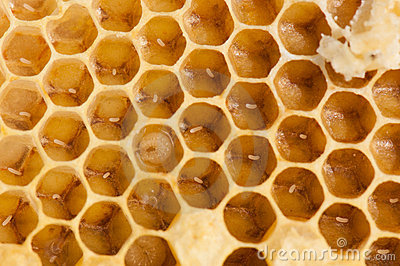
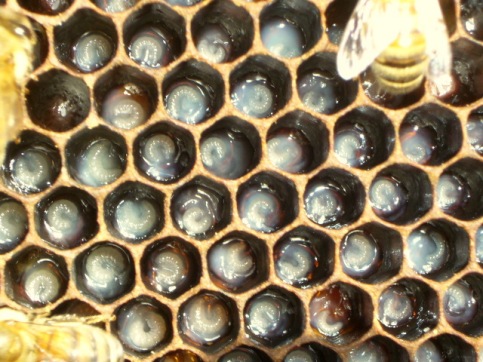
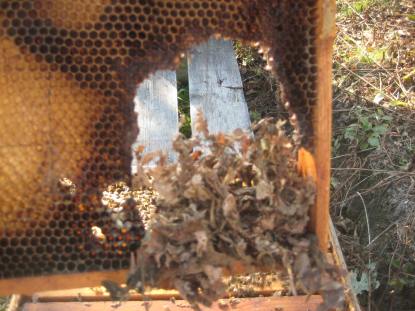
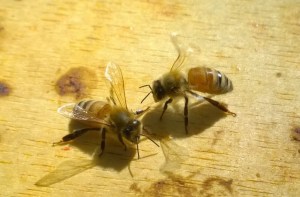
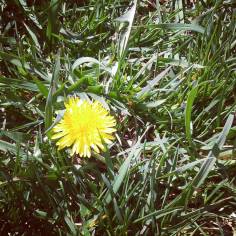
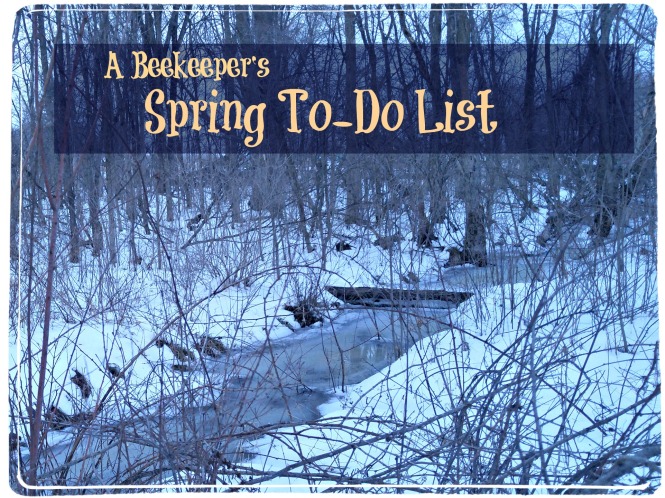

 soon as it’s warm enough to see bees flying and to peek inside, you’ll need to evaluate the food stores. You’re not going to want to do a very intrusive hive check, but this is the time of year when bees start to run low on food stores. Additionally, warmer days mean the bees are flying (and using more energy) and the queen is starting to lay. As a rule of thumb, we begin feeding around this time and continue to feed until the dandelions are up in full force. It is not uncommon for hives to starve out in March and, for the beekeeper, this is devastating. In the spring, we feed a 1:1 ratio of sugar to water, and/or we use up our fondant cakes if we have any left from the winter.
soon as it’s warm enough to see bees flying and to peek inside, you’ll need to evaluate the food stores. You’re not going to want to do a very intrusive hive check, but this is the time of year when bees start to run low on food stores. Additionally, warmer days mean the bees are flying (and using more energy) and the queen is starting to lay. As a rule of thumb, we begin feeding around this time and continue to feed until the dandelions are up in full force. It is not uncommon for hives to starve out in March and, for the beekeeper, this is devastating. In the spring, we feed a 1:1 ratio of sugar to water, and/or we use up our fondant cakes if we have any left from the winter.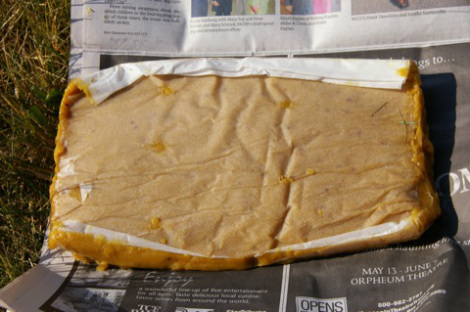
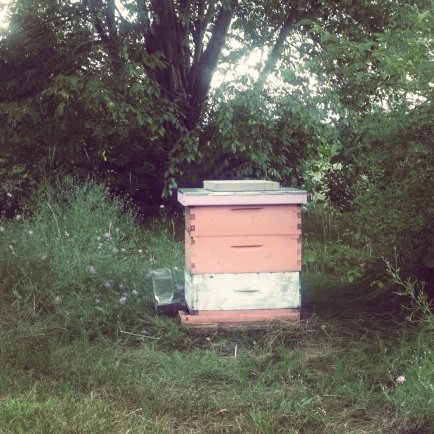 es. This is the time of year to order or build extra boxes and frames. If you are going to paint any hives, do it now.
es. This is the time of year to order or build extra boxes and frames. If you are going to paint any hives, do it now.
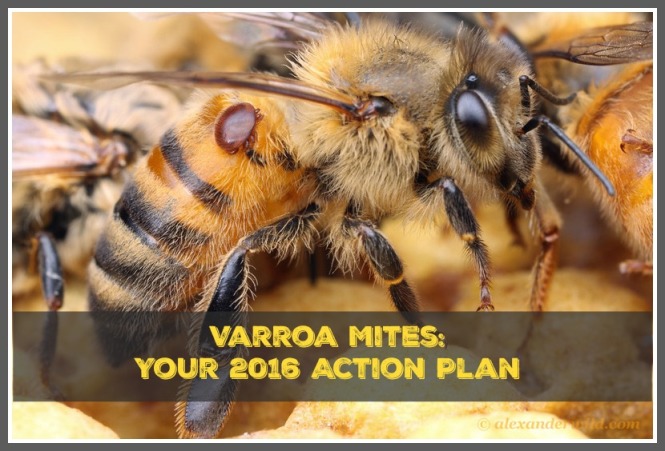

 Apiguard
Apiguard Mite-Away Quick Strips
Mite-Away Quick Strips Hopguard
Hopguard